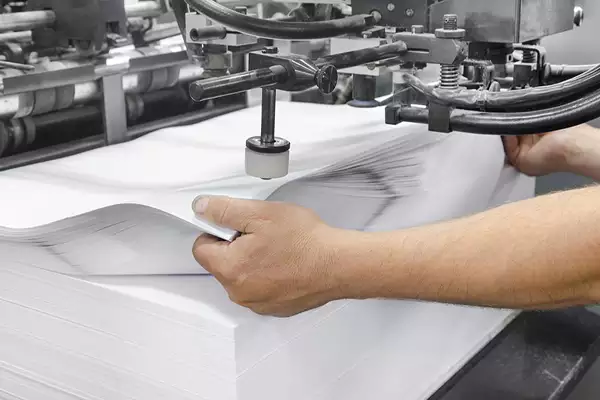RTO for Solvent-Based Printing
Solvent-based printing is a widely used technique in the printing industry. However, it produces harmful volatile organic compounds (VOCs) that can have negative impacts on both the environment and human health. Therefore, it is important to implement effective emission control measures to reduce the amount of VOCs released into the atmosphere. One of the most effective methods for controlling VOC emissions is using a regenerative thermal oxidizer (RTO) system.
How does RTO work?
An RTO system consists of a combustion chamber, ceramic heat exchanger beds, and a control system. The VOC-laden air is drawn into the combustion chamber, where it is heated up to a temperature of 760¡ãC (1400¡ãF) or higher. At this high temperature, the VOCs are oxidized into water vapor and carbon dioxide. The heat generated by the combustion process is then transferred to the ceramic beds, which in turn preheat the incoming VOC-laden air. This preheating not only saves energy but also reduces the temperature required for VOC oxidation. The purified air is then discharged into the atmosphere.
The Benefits of RTO for Solvent-Based Printing
- RTO systems are highly efficient in controlling VOC emissions. They can achieve destruction efficiency rates of up to 99%, which ensures that only a negligible amount of VOCs are released into the atmosphere.
- RTOs are cost-effective solutions for controlling VOC emissions. The initial investment in an RTO system may seem high, but the long-term benefits outweigh the costs. RTOs have lower operating costs compared to other VOC control technologies, such as carbon adsorption systems and thermal recuperative oxidizers.
- RTOs are easy to maintain. The ceramic beds used in RTOs are durable and can last for many years. They also require minimal maintenance, such as periodic cleaning and visual inspection.
- RTOs can handle a wide range of VOC concentrations and flow rates. This makes them suitable for different printing applications, including flexographic, gravure, and digital printing.
- RTOs can reduce the need for air pollution permits. Since RTOs have high destruction efficiency rates, they can help companies meet emission standards and avoid the need for additional permits.
- RTOs can help companies improve their environmental image. Implementing effective VOC control measures, such as RTOs, shows that a company is committed to reducing its environmental impact and protecting the health of its employees and the community.
Overall, implementing an RTO system is an effective way to control VOC emissions in the printing industry. It not only ensures compliance with environmental regulations but also provides long-term benefits such as cost savings, improved operational efficiency, and enhanced environmental image.


Introdução da empresa
We are a high-end equipment manufacturing enterprise specializing in comprehensive treatment of volatile organic compound (VOC) exhaust gas and carbon reduction and energy-saving technology. Our core technologies include thermal energy, combustion, sealing, and automatic control. We have the ability to simulate temperature fields and airflow fields, as well as a testing capability for ceramic heat storage material performance, zeolite molecular sieve adsorbent material selection, and high-temperature incineration and oxidation of VOC organic compounds.
Vantagens da equipe
We have an RTO technology research and development center and a waste gas carbon reduction engineering technology center in Xi’an, as well as a 30,000 square meter production base in Yangling. We are the leading manufacturer of RTO equipment and zeolite molecular sieve rotary wheel equipment in terms of production and sales worldwide. Our core technical team comes from the Aerospace Liquid Rocket Engine Research Institute (Aerospace Sixth Institute). We currently have more than 360 employees, including more than 60 research and development technical backbone personnel, including 3 senior engineers at the research professor level, 6 senior engineers, and 47 thermodynamics doctors.
Produtos principais
Our core products are the rotary valve regenerative thermal oxidizer (RTO) and zeolite molecular sieve adsorption concentration rotary wheel. Combined with our expertise in environmental protection and thermal energy system engineering technology, we can provide customers with comprehensive solutions for industrial waste gas treatment and carbon reduction through thermal energy utilization for various operating conditions.

Certificações, Patentes e Honrarias
- Certificação do Sistema de Gestão da Propriedade Intelectual
- Certificação do Sistema de Gestão da Qualidade
- Certificação do Sistema de Gestão Ambiental
- Qualificação Empresarial da Indústria da Construção
- Empresa de alta tecnologia
- Patent for Rotary Valve Regenerative Thermal Oxidizer
- Patent for Rotary Heat Storage Incineration Equipment
- Patent for Disc Zeolite Rotary Wheel

Como escolher o equipamento RTO certo
- Determine the characteristics of the waste gas.
- Understand local regulations and emission standards.
- Evaluate energy efficiency.
- Consider operation and maintenance.
- Conduct budget and cost analysis.
- Select the appropriate type of RTO.
- Consider environmental and safety factors.
- Perform performance testing and verification.
Each point will be explained in detail:
Processo de serviço
- Preliminary consultation, on-site inspection, and demand analysis.
- Solution design, simulation, and solution review.
- Custom production, quality control, and factory testing.
- On-site installation, commissioning, and training services.
- Regular maintenance, technical support, and spare parts supply.
Each point will be explained in detail. We are a one-stop solution provider with a professional team to tailor RTO solutions for our customers.
Autor: Miya
